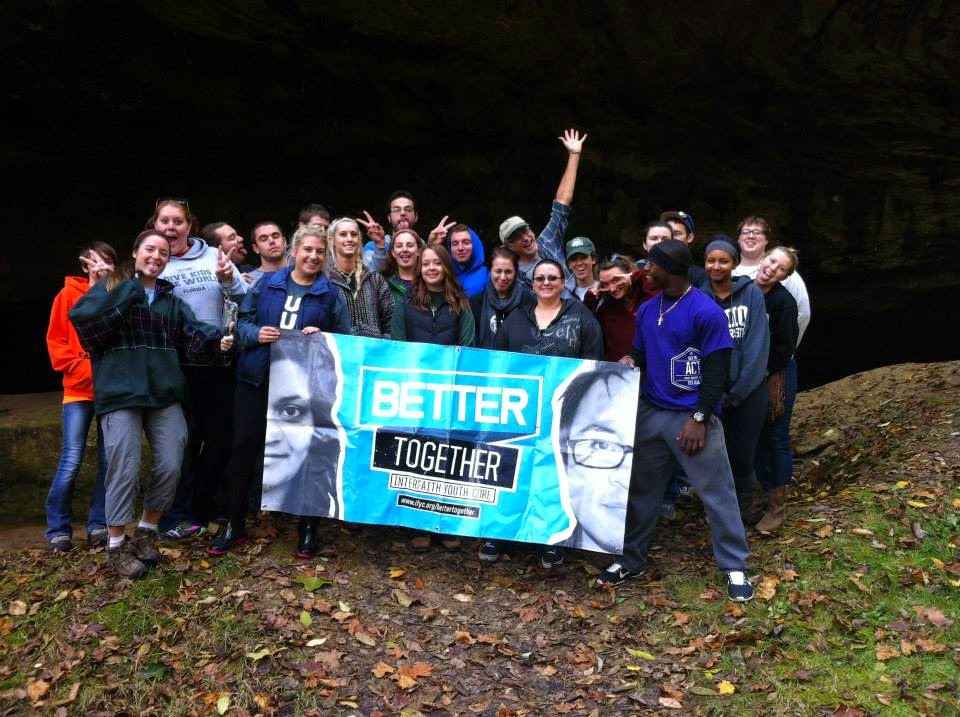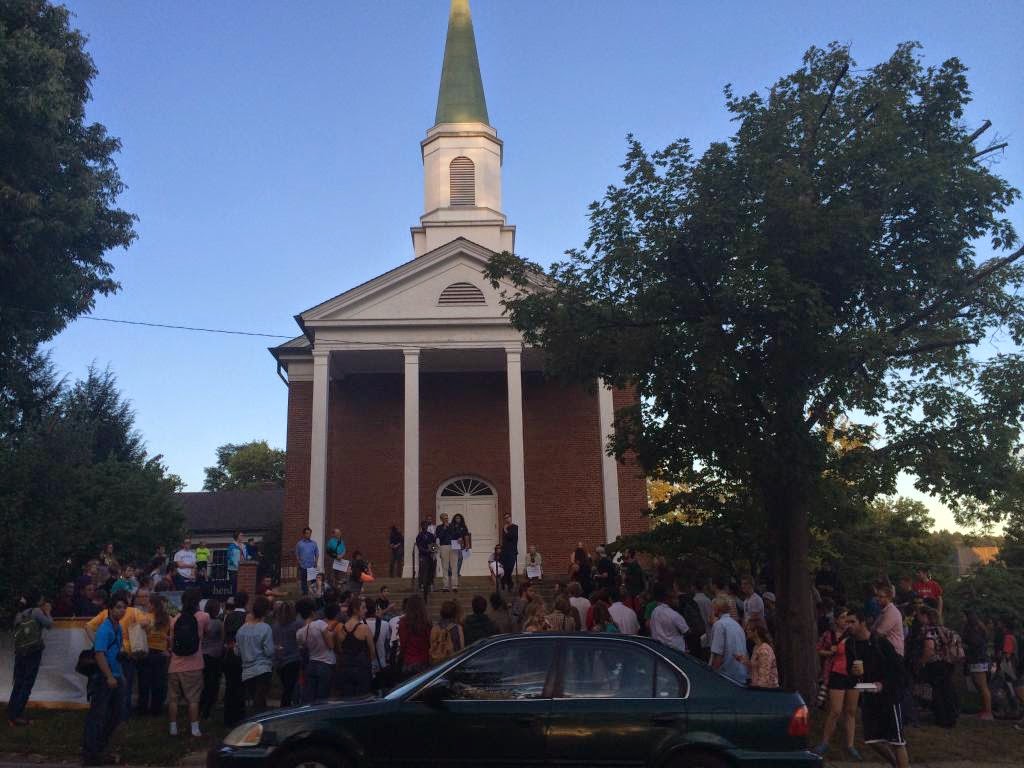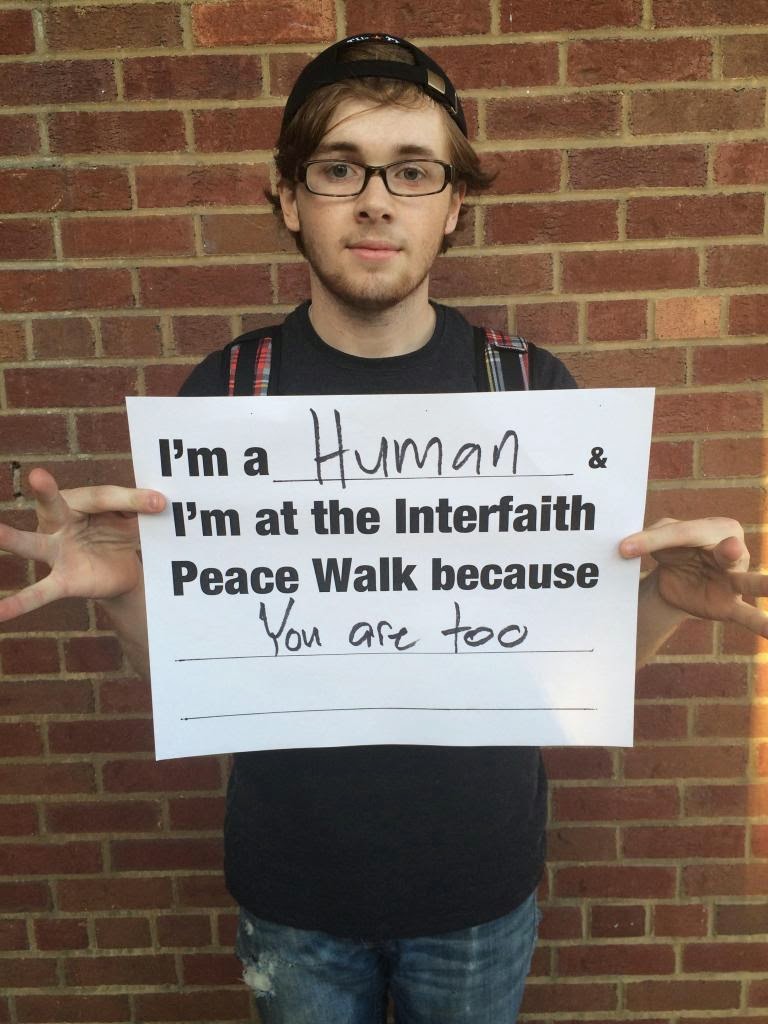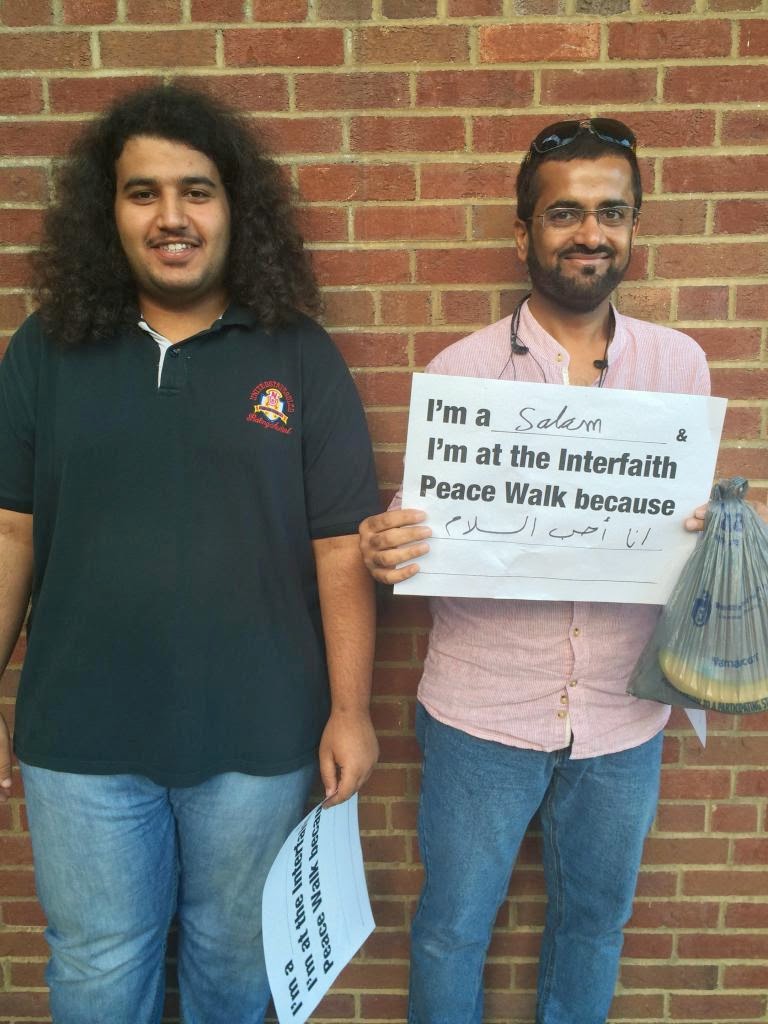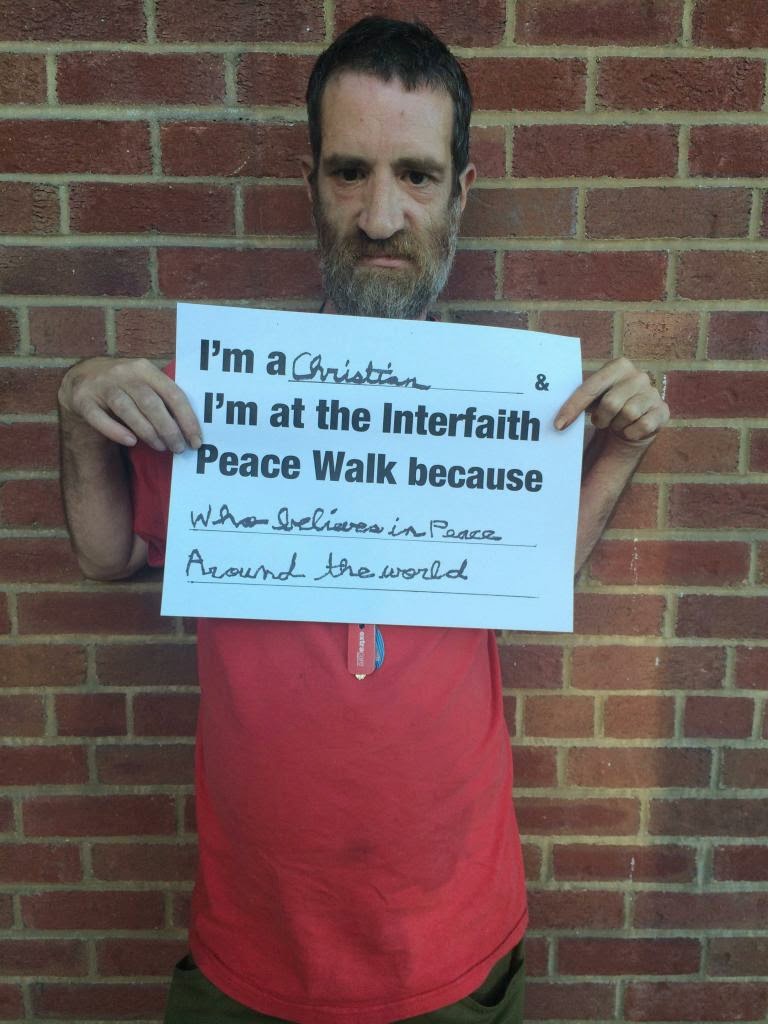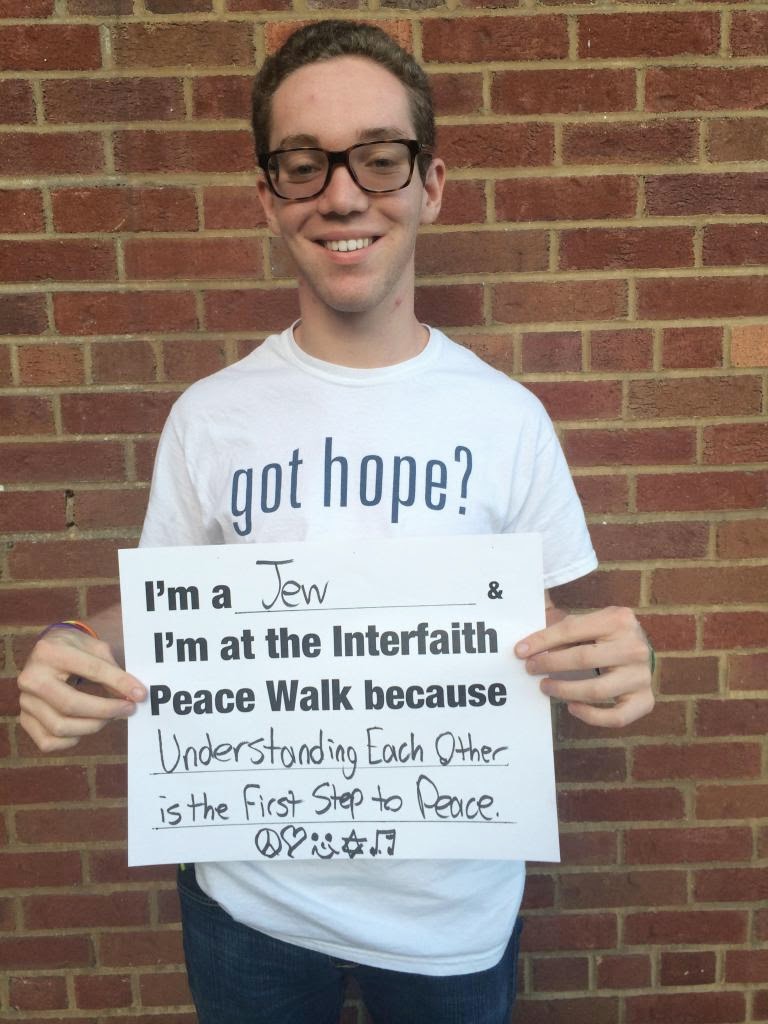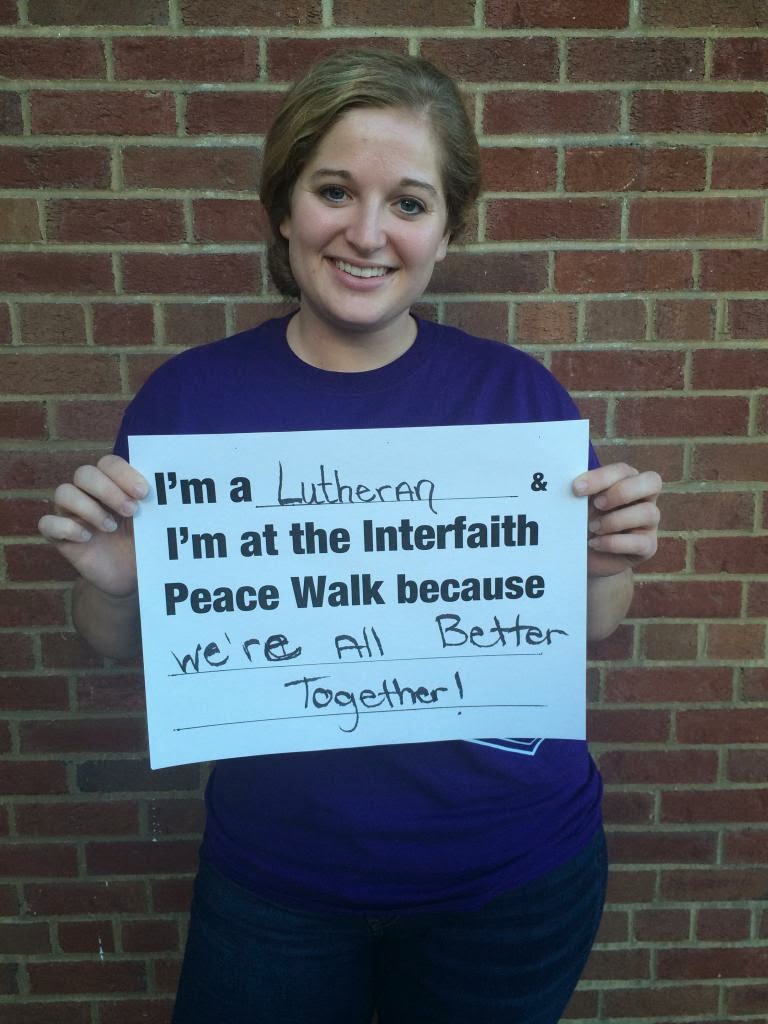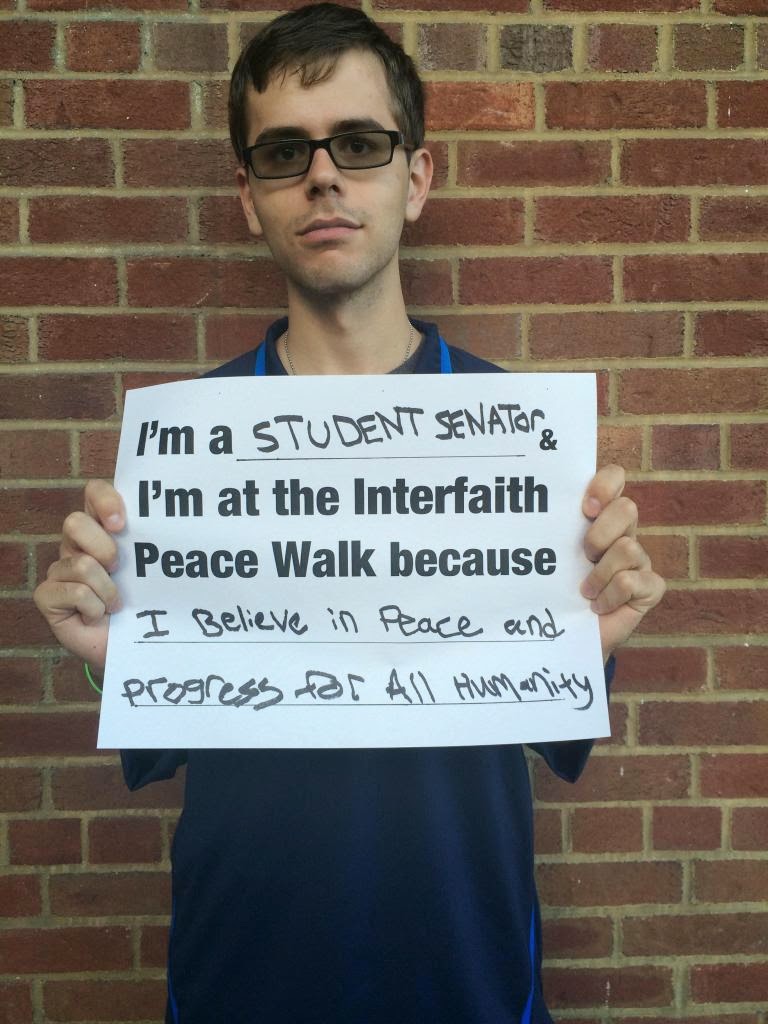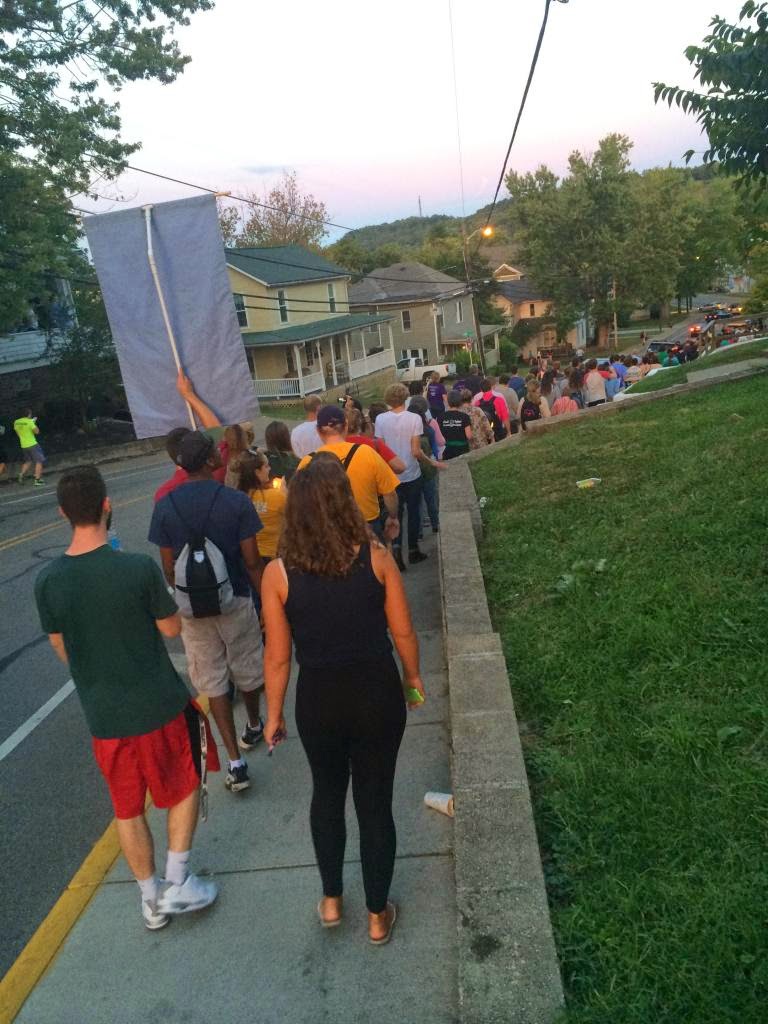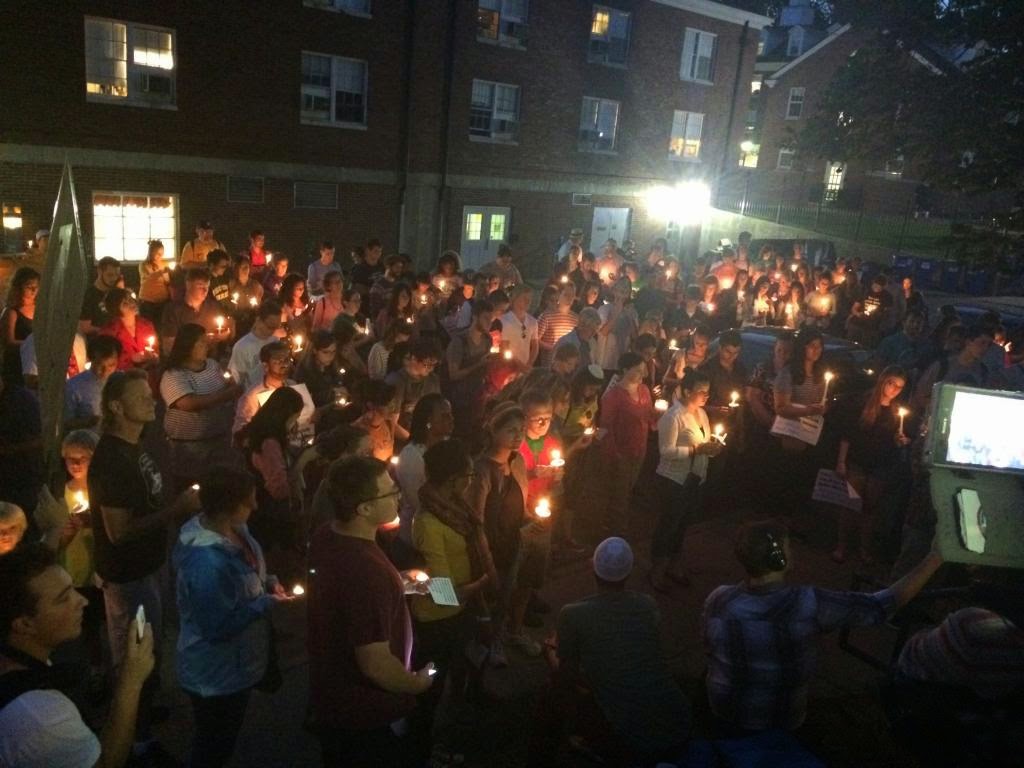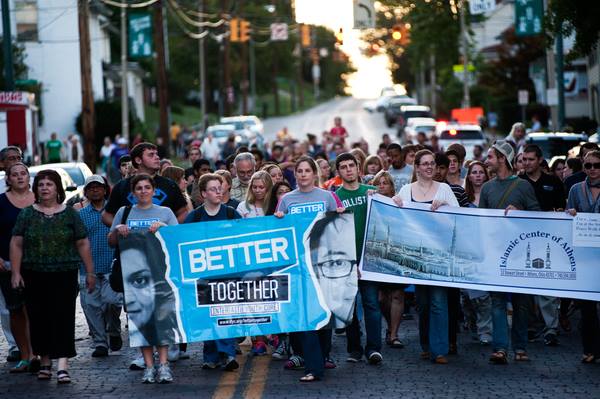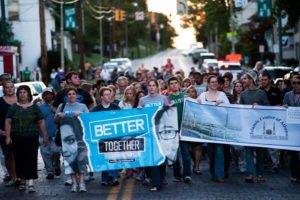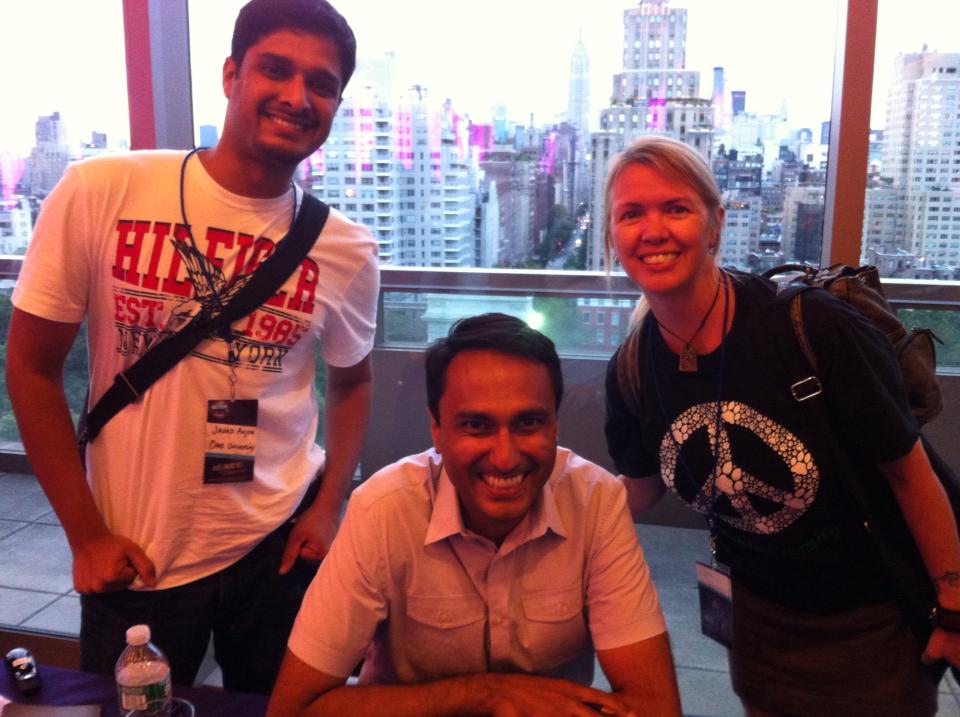We are excited to be sending two more Bobcats to Interfaith Youth Core’s Leadership Institute in Chicago next month! We look for these students to come back inspired and equipped to help Better Together at Ohio University continue to build interfaith community through education, engagement and service! Thanks to the Ohio University Dean of Students and Diversity and Inclusion offices for their ongoing and generous support!
Make sure the 9/11 Interfaith Peace Walk is on your calendar and start the year off with an always inspiring experience of the amazing religious and non-religious diversity that we choose to celebrate here at OU and in Athens. As always, we will gather in front of the Episcopal Church of the Good Shepherd around 7:00pm on Friday, September 11 and end at the Islamic Center on Stewart St.
Look for another Serve Better Together watershed clean-up project with Monday Creek and other cool events and opportunities to voice your values, engage with others and act together.
If YOU are an undergrad Bobcat and would like to get involved this fall, email us at bettertogetherou@gmail.com, call UCM at 740-593-7301!
CULTIVATE PEACE – by Rev. Evan Young
Published by Interfaith Youth Core on Oct. 16, 2014
Just as the Better Together team at Ohio University was getting back to campus and getting their feet under them for this year’s campaign, something happened that changed everything.
On September 2, the newly elected president of Ohio U’s Student Senate uploaded a video response to the ALS Ice Bucket Challenge she was issued by the university’s president. Rather than a bucket of ice water, Megan Marzec dumped a bucket of fake blood over her head, while calling attention to the Israeli government’s treatment of the people of Palestine and calling on the university to divest from all academic and other institutions connected to or supportive of the government of Israel.
Within hours, the university president issued a statement distancing himself and the university from Marzec’s position. The Student Senate issued an apology for her actions, and made clear that her statement didn’t express the Senate’s opinion. And representatives of several Jewish and/or pro-Israel student groups showed up at the September 3 Senate meeting to call for Marzec’s resignation.
Then things went viral. Within days, Marzec’s email and Facebook were flooded with hate messages, death threats, rape threats, and vitriol from all over the world. The university and the local chapter of Hillel were deluged with phone calls and messages from concerned parents and donors, threatening to pull their students and/or money from a campus that (to them) was feeling more and more unsafe. It seemed like things couldn’t possibly get worse.
Things got worse. Members of Bobcats for Israel attended the September 10 Student Senate meeting and, as it was called to order, mounted a “filibuster,” reading a statement decrying Marzec and then reading testimonies from administrators at various universities arguing that academic sanctions were counterproductive. They held the floor for close to 40 minutes, while student senators, faculty members, and students shouted their disapproval, raised chants against them, and, at times, physically confronted them. Some at the meeting heard students call them “fascists” and “Nazis,” and video of the event captured something that sounded like “bring on the rope.” At that point Marzec called for a Senate vote on whether they should be removed from the meeting, and four of the protesting students were arrested and removed. Tensions were high.
Meanwhile, our Better Together campus organizers (remember them?) were busy planning our fourth annual 9/11 Interfaith Peace Walk. Started on the tenth anniversary of the 9/11 terrorist attacks, the Walk has offered an opportunity each September for hundreds of students and community members to come together to embody a different vision of what religious diversity might look like—people from all faiths united in their commitment to peace. It’s also served as a ready-made public kickoff to the year’s Better Together campaign—a way to get the name and the message out there, on the streets of Athens, in front of several hundred of our best and/or newest friends.
So, the day after four students were arrested at a Student Senate meeting where they called for the resignation of the duly elected Senate president, the week after the University was propelled onto the biggest stage many of us had ever imagined, we called people of all faiths together to walk for peace, and to cultivate peace from the inside out. “We’re at the center of a media storm, and right now peace seems pretty far away,” I said in my introductory remarks. “And yet however tempted by despair, we have brought our sore and heavy hearts here to be something extraordinary, together. It starts here. Right here, in our sore and heavy hearts, is where we need to begin to make peace.” And we walked—Protestants and Catholics, Jews and Muslims, Unitarians and agnostics and atheists and Buddhists. In silence, in quiet conversation, in community. At the end of the walk, in the light of the candles we held, we sang: “I’ve got peace like a river, Joy like a fountain, tears like the raindrops, strength like a mountain.”
In light of how everything changed, think about what Dean of Students Jenny Hall-Jones said at the walk: “There’s healing power in saying ‘This is who I am, and I’m standing next to someone very different from me, but we’re all in this together.'” Or what Student Senate Vice President Caitlyn McDaniel said after making the walk with students from the Muslim Student Association and Bobcats for Israel: “This was very necessary for the community, and it was a beautiful thing to see people coming together, especially today.” Think about seeing the president of Bobcats for Israel on the lawn of the campus Islamic Center, chatting with other students who came to the walk. Our work changes things.
It’s still too soon to know exactly how our community will respond to the interfaith challenge Megan Marzec raised. But we will respond. We’re planning panels and teach-ins and movie screenings. We’re beginning, here and there, to figure out how we can talk about all this. And in all these conversations we’re beginning to build the social capital that will make us resilient, that will empower us to face future controversies together.
Interfaith Peace Walk
THE POWER OF INTERFAITH COOPERATION AND ACTION!
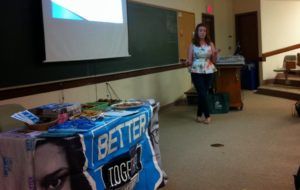 |
|
| KRISTA MOBLEY @ THE BETTER TOGETHER KICKOFF |
I never thought about the power of an interfaith dialogue in overcoming social issues. In fact, this past spring was the first time this idea had ever been presented to me. This idea inspires me, as a global studies major and a global citizen, because many of the conflicts and wars I read about in class and raise awareness for are often tied to religious difference in some way.
The Interfaith Youth Core (IFYC), a national organization dedicated to building religious
pluralism through interfaith cooperation and leadership, created the Better Together Campaign. The Campaign works to engage individuals with and without faith traditions in the creation of an interfaith dialogue through social work. The Campaign is in its fourth year here in the Athens community, sponsored by United Campus Ministry. This year’s Better Together Team is focused on fundraising for the Community Food InitiativeS (CFI) to raise awareness about food insecurity in the region. This focus will serve as the social work component and basis for the continued construction of our community’s interfaith consciousness.
Our work to build interfaith engagement has manifested itself in movie screenings, penny wars, and the cleaning of a polluted ravine to not only raise money for CFI but to also bring greater social, environmental and interfaith harmony to this lovely region of Southeast Ohio. And that’s not all, because the Better Together Team is just getting started.
We have a strong foundation of interfaith leaders hosted in that big, red brick house at 18 North College. We are working tirelessly to build bridges between all faiths in order to harness the power we possess to make this world a more peaceful place. Look for us in the community orchestrating peace walks, rallies and events to fuel this flourishing interfaith movement!
September 11th Peace Walk to Demonstrate We Are Better Together
UCM Participates in 4th Interfaith Leadership Institute
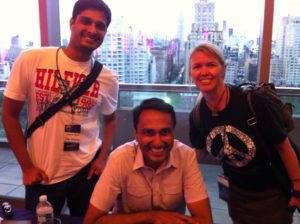 |
| Javad, IFYC Founder Eboo Patel and UCM Director Melissa Wales at ILI Aug. 2014 |
Better Together at OU receives honorable mention by IFYC!
—-B R E A K I N G N E W S —— This just in! Better Together at Ohio University received honorable mention for “Loudest Voice” for successfully spreading the word about interfaith cooperation and the Better Together campaign. Given that we WON the Best Campus Impact award last year, it’s very cool to be mentioned AGAIN this year among this very select group of campuses. Way to go Allison, Anne, Phil, Joannah, Abby, Olivia, and all the other Better Together students! We’re looking forward to a great 2013-14 campaign and will be sending two more students and UCM Director Melissa Wales to an Interfaith Leadership Institute in New York City this August to build on this momentum and develop more interfaith campus leaders!
Better Together wraps up one year and plans for 2013-141
–>
–>
Religious leaders host discussion, show solidarity | The Post
View Original Post: Religious leaders host discussion, show solidarity | The Post
Religious leaders host discussion, show solidarity
Updated: March 19, 2013 – 4:46am

Five members from different religious institutions in Athens came together Monday night to start a dialogue about violence and faith in regards to their different belief sets as part of Ohio University’s Better Together campaign.
The panel included representatives from five faiths: Rabbi Danielle Leshaw, director of Hillel at OU; Omar Kurdi, communication chair of the Muslim Student Association; Rob Martin, reverend at First Presbyterian Church; Tiffanie Shanks, director of Youth and Young Adult Ministries at First United Methodist Church; and Stephen Kropf, assistant director of the Athens KTC Tibetan Buddhist Meditation Center.
Allison Schoeppner, campus organizer of the Better Together campaign at OU, said having these leaders in a room together while discussing a topic such as violence helps relieve the preconception of division between religions.
“(This) is not an image of faith that we see a lot in the media in our society,” said Schoeppner, a junior studying international studies and war and peace. “It shows solidarity, the fact that there are similarities between religions; it shows that there are issues that we can find commonality on and work together on to help end.”
Evan Young, moderator for the panel, which hosted about 15 attendees, said the event fostered a type of discussion necessary for bridging gaps among religions.
“It’s a challenge sometimes to have a panel where people don’t speak in the abstract, where they don’t talk about big ideas and grand philosophies but instead speak from a place of personal experience and their own struggles,” added Young, minister at United Campus Ministries and the Universalist Fellowship of Athens. “That was one of the aims of the panel, and I think we got there.”
The panel focused on a variety of aspects on the topic of violence as interpreted by different faiths. The conversation began with Young asking questions to participants and then opened up to audience participation. Discussion ranged from recent events like the verdict of the highly publicized Steubenville rape case to the fundamental causes of violence.
“Faith should be the place where people find answers,” Shanks said. “(It should be) where they can find comfort, and where they find peace. All faith traditions (should) take time to address these kinds of questions.”

